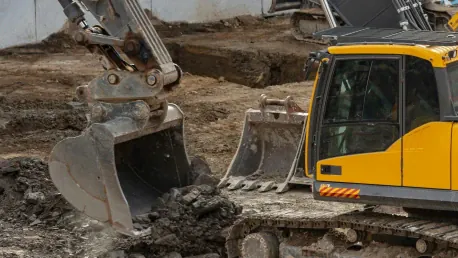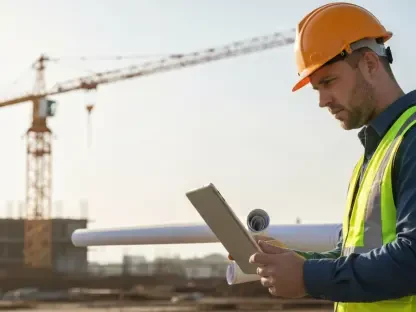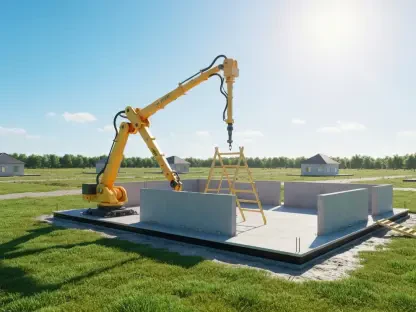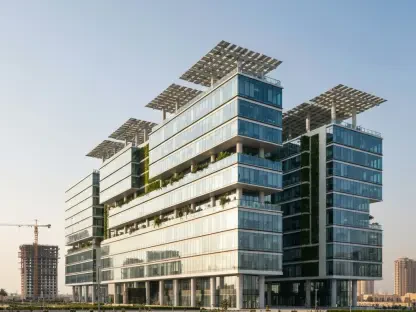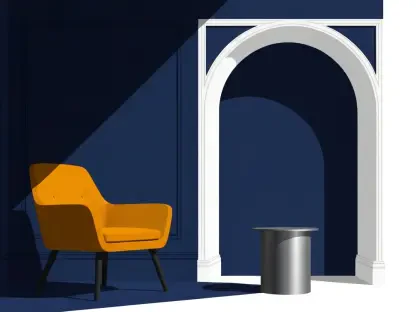Modernization in the construction industry is transforming how we perceive operator ergonomics, safety, and productivity. This evolution is particularly evident in the redesign of heavy equipment cabs, which have undergone significant changes aimed at enhancing the operator’s work environment. These innovations are not just about comfort; they also have a profound impact on safety, operator health, and overall job site efficiency.
The Importance of Cab Comfort
Reducing Operator Fatigue
Heavy equipment operators spend long hours in challenging conditions. Redesigned cabs now come equipped with electric-hydraulic joystick controls and larger, more ergonomic spaces that provide enhanced comfort. Elements like lumbar support, pressurized environments to block out dust and water, and fully adjustable air-ride seats have become standard. These features are not mere luxuries; they are vital in reducing operator fatigue, which directly affects productivity and safety on the job site.
Fatigue can severely compromise an operator’s efficiency and decision-making abilities, leading to errors that could have significant safety implications. By introducing more comfortable and ergonomically designed cabs, manufacturers aim to mitigate these risks. Electric-hydraulic joystick controls, for instance, reduce the physical strain required for operating heavy machinery. Similarly, larger cab spaces allow operators more room to move and adjust their seating positions, reducing the potential for musculoskeletal issues over extended periods. Collectively, these features help operators maintain higher performance levels and make quicker, more accurate decisions, significantly boosting site productivity and safety.
Enhancing Ergonomics
Ergonomically designed controls and seating are crucial for maintaining operator health. Poorly designed cabs can lead to chronic pain and fatigue, resulting in increased absenteeism and reduced job satisfaction. By integrating ergonomically designed controls—such as joystick placements, adjustable seats, and strategically located monitors—manufacturers like CASE and Hitachi ensure that operators can work more comfortably and effectively for longer periods.
The design of control panels and seating arrangements plays an essential role in minimizing repetitive strain injuries, which are common in jobs requiring extended periods of machinery operation. Joystick placements are now optimized for ease of access, allowing operators to control machinery with minimal hand and wrist movements. Fully adjustable seats enable operators to tailor their seating positions to their specific ergonomic needs, lowering the risks associated with prolonged sitting. Monitors and other control instruments are thoughtfully placed to reduce the need for excessive head and neck movement, thus enhancing the overall operator experience. This heightened focus on ergonomics not only improves worker health but also leads to longer, more productive shifts.
Health and Safety Innovations
Advanced Filtration Systems
The construction industry often exposes operators to harmful substances like respirable crystalline silica (RCS) dust. Modern cabs tackle this issue by incorporating advanced pressurization and filtration systems capable of removing at least 95% of respirable aerosols. These systems mitigate long-term health risks, ensuring that operators remain safe and healthy over the course of their careers.
Dust and other airborne particles pose significant health risks, contributing to conditions such as silicosis, a lung disease caused by inhaling fine silica particles. Advanced filtration systems act as a frontline defense, employing high-efficiency particulate air (HEPA) filters that capture these harmful substances before they can be inhaled. Enhanced pressurization systems also create a positive pressure environment inside the cab, effectively preventing external contaminants from entering. This dual approach not only ensures that operators are breathing cleaner air but also reduces the cumulative health risks associated with long-term exposure to hazardous materials, fostering a safer work environment.
Sound Insulation
Noise-induced fatigue is another critical issue that operators face. Modern cabs feature sound insulation materials that significantly reduce noise levels. This insulation not only protects the operator’s hearing but also reduces mental fatigue, allowing for sharper focus and quicker responses to job site conditions.
Excessive noise can lead to both short-term and long-term health problems, including hearing loss and increased stress levels, which can adversely affect an operator’s performance. By incorporating advanced sound insulation materials, manufacturers aim to create a quieter, more serene working environment. This reduction in noise allows operators to concentrate better, enhancing their ability to react swiftly to dynamic job site conditions. Additionally, a quieter cab environment lessens the likelihood of communication errors, as operators can better hear and relay instructions. Overall, this focus on sound insulation not only safeguards hearing but also contributes to a more efficient and safe work environment.
Visibility and Control Enhancements
Panoramic Visibility
Safety and efficiency on construction sites are heavily reliant on the operator’s ability to see their surroundings clearly. Redesigned cabs now feature panoramic visibility, which is enhanced by peripheral camera systems and LED lighting. This expansive field of view helps operators detect potential hazards more quickly, reducing the likelihood of accidents.
Clear visibility is essential for preventing accidents and ensuring smooth operations. Panoramic windows provide a wider, more unobstructed field of view, allowing operators to scan their surroundings more effectively. Peripheral camera systems offer additional visual coverage, particularly in blind spots, enhancing the operator’s situational awareness. High-intensity LED lights improve visibility during low-light conditions, ensuring operators can work efficiently regardless of the time of day or weather conditions. These advancements collectively enhance safety and operational effectiveness, making job sites more secure and productive.
Optimized Positioning
The layout of cab pillars, monitors, and switch panels plays a crucial role in optimizing visibility and control. By carefully designing these elements to avoid obstructing the operator’s view, manufacturers ensure that operators can maintain a clear sightline, significantly boosting operational safety and efficiency.
Strategically positioned cab pillars minimize visual obstructions, ensuring that operators have an uninterrupted line of sight to critical areas around the machinery. Monitors and switch panels are placed within easy reach and sight, allowing operators to access vital controls without diverting their gaze from the field of operation. This thoughtful design reduces the cognitive load on operators, enabling them to make quicker, more accurate decisions. The result is a safer, more efficient work environment where operators can focus on their tasks without unnecessary distractions or impediments.
Technological and Ergonomic Advances
Heated and Adjustable Seats
Today’s heavy equipment cabs come with heated, fully adjustable air-ride seats that cater to the operator’s specific comfort needs. These advancements are crucial for maintaining comfort during long shifts, reducing the risk of discomfort-related distractions.
Heated seats provide extra comfort in colder weather conditions, ensuring that operators can maintain focus and perform their tasks effectively without being distracted by the cold. Fully adjustable air-ride seats allow operators to tailor their seating position to their individual preferences, ensuring optimal support and comfort. These seats can be adjusted to reduce pressure points, improve circulation, and minimize the risk of chronic pain. By enhancing comfort, these features help operators stay alert and focused, reducing the likelihood of fatigue-related errors and improving overall job site productivity.
Control Systems and Storage
The integration of ride control systems and ample storage compartments not only boosts comfort but also enhances operational efficiency. These features allow operators to store tools and personal items within reach and manage machine movements more smoothly, contributing to a more streamlined workflow.
Ride control systems provide a smoother operating experience by minimizing the impact of rough terrain, reducing operator fatigue and improving machine handling. Storage compartments offer convenient spaces for keeping essential tools and personal items, ensuring that operators have everything they need within easy reach. This reduces the time and effort required to access tools, allowing operators to focus on their tasks and maintain a steady workflow. Together, these features contribute to a more efficient and comfortable working environment, promoting higher levels of productivity and job satisfaction.
Resonating with Market Needs
Addressing Labor Shortages
Labor shortages in the construction industry have driven manufacturers to invest significantly in operator comfort and ergonomics. By designing cabs that offer superior comfort and health protections, companies are better positioned to attract and retain skilled operators. This is crucial for meeting the increasing job demands driven by infrastructure investments.
As the demand for skilled labor continues to outstrip supply, manufacturers recognize the importance of creating an attractive working environment to draw in talent. By offering operator-centric features that enhance comfort and safety, companies can appeal to a broader pool of potential employees, many of whom may be deterred by the physically demanding nature of construction work. Investments in better cab designs demonstrate a commitment to the well-being of operators, creating a more appealing and sustainable workplace that supports long-term employee retention and satisfaction.
Enhancing Operator Retention
Offering a comfortable, safe, and ergonomic working environment is a powerful tool for retaining skilled operators. Reduced fatigue, improved health protections, and enhanced control systems create a more appealing job proposition, encouraging operators to stay longer with their employers and perform at higher levels of productivity.
The benefits of retaining skilled operators extend beyond immediate productivity gains. Experienced operators bring a wealth of knowledge and expertise, contributing to higher-quality work and more efficient operations. By providing a work environment that prioritizes operator well-being, companies can foster loyalty and reduce turnover rates, creating a more stable and experienced workforce. Enhanced retention also reduces the costs and disruptions associated with recruiting and training new employees, making it a financially sound strategy for long-term success.
The Future of Heavy Equipment Design
Continuous Innovations
As technology continues to advance, so will the design of heavy equipment cabs. The focus will remain on improving operator comfort, safety, and productivity. New innovations in materials, control systems, and ergonomics will continue to emerge, setting new standards for the industry.
Emerging technologies, such as artificial intelligence and advanced materials science, will likely play a pivotal role in future cab designs. These innovations have the potential to introduce even more refined ergonomic solutions, smarter control systems, and enhanced safety measures. For example, AI-driven systems could offer real-time adjustments to control settings based on the operator’s preferences and performance, further reducing fatigue and increasing efficiency. As new materials become available, more durable and comfortable options for seats, panels, and insulation will enhance the operator experience even further, maintaining a trajectory of continuous improvement in cab design.
Market Adaptation
The construction industry is undergoing significant modernization, reshaping our understanding of operator ergonomics, safety, and productivity. One of the most notable areas of transformation is the redesign of heavy machinery cabs. In recent years, heavy equipment cabins have seen substantial improvements, focusing not just on operator comfort but also on enhancing safety and health. These advancements include the incorporation of ergonomic seats, better climate control, intuitive controls, and advanced technology interfaces that allow operators to manage tasks more efficiently.
Such features are designed to reduce physical strain, thereby minimizing the risk of long-term injuries and ensuring that operators can work longer hours with less fatigue. Improved visibility from the cabs also contributes to safer work environments by reducing blind spots and enabling better precision during operations. Additionally, these innovations help boost productivity on job sites, as operators can perform tasks more effectively and with greater accuracy.
In sum, the modernization of equipment cabins is more than a luxury; it’s a multifaceted improvement that enhances overall job site efficiency, ensures operator safety, and promotes better health outcomes for workers. This evolution in the construction industry signifies a major step forward in how we perceive and manage the workplace environment.
